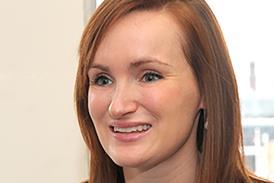In Dickensian London, you are looking through a high-street window at a senior associate who is feverishly working under candlelight on a cold, dark winter’s morning. Your ear against the window, you hear his muffled voice, ‘please, may we put a piece of charcoal on the fire, sir?’. A gentleman, dressed in a fine suit and a warm coat, responds, ‘there is no need, there already is one’. The partner turns to his fellow partner and asks ‘are we profitable?’. ‘Yes, very,’ she responds. ‘If they work until dusk we will be even more profitable.’ Here, you witness the birth of Big Law.

Perhaps that is a little unfair. However, it is trite that in Big Law a key goal is the pursuit of an ever-increasing profit per equity partner. That is an unavoidable outcome of the partnership model. But has Big Law operated in a way that is counter-productive to profit?
It is true that one requirement of Big Law is that fee-earners work when it is convenient for the firm and its clients. Those, principally working mothers, who work three or four days a week, often find themselves working on their ‘day off’ or working into the night to keep up. Partners, and indeed clients, expect them to respond to emails, even when they are not supposed to be working. This situation is not specific to Big Law. It can also be seen in-house, where the demands on lawyers are, frankly, excessive.
Moreover, the bulk of client and networking events are in the evening, disenfranchising those who have childcare responsibilities. Justin Sullivan of Adair, president-elect of the Royal Institution of Chartered Surveyors, is a proponent of diversity in the workplace and ensures that their events are held during the working day. More needs to be done on this in the legal sector.
To date, despite Covid’s enforced lockdowns, Big Law has reluctantly embraced workplace trends. Out of necessity, fee-earners were equipped (partially or otherwise) to work from home, to maintain productivity. But the signs are that Big Law is seeking to put that into reverse, presumably as a result of empty, expensive offices and perceived productivity issues. This is despite the fact that most fee-earners were able to do their jobs from home and keep the washing machine full at suitable junctures.
At the same time as Big Law seeks to tempt fee-earners back into the office, remote and hybrid working has led to calls for wider, more truly flexible working.
Gaining momentum outside law is the principle that an employee may tailor their work schedule to suit their individual circadian rhythms – our internal body-clock that regulates cycles of alertness and sleepiness – rather than adhering to the usual employer expectations.
The term ‘chronoworking’ – first coined by journalist Ellen C Scott – encourages employees to pick schedules that match their chronotype. Those chronotypes were established by American clinical psychologist Michael Breus. Breus found that 55% of people found their productivity peaked in the middle of the day; 15% prefer early-morning starts; 15% would rather work late; and 10% have an erratic circadian rhythm.
Despite those varied demands, according to Clio’s Legal Trends Report, the average Big Law lawyer officially works 9am to 5pm (but often late into the evening). But could partners be missing a trick by stipulating the core hours that must be worked? There are some limitations imposed by the profession. Litigators really need to be awake when the court opens, for obvious reasons. Transactional lawyers need their counter-parties to be awake to effect completions. But should there be greater flexibility to enable fee-earners to work when they are most productive? Would this not lead to higher quality work and a happier workforce?
The architecture of Big Law is not presently agile enough to truly embrace a change in workplace culture of that magnitude. It does not have a sophisticated enough ecosystem to allow for the delegation and supervision of work across different working hours. Equally, those who work fewer than five days a week must be available across the week due to the nature of the Big Law pyramid. Trainees need junior associate supervision, junior associates need senior associate supervision, and senior associates must be at the beck and call of partners. If any of those classes operated outside normal working hours, the system grinds to a halt. Clients have got used to law-on-demand, meaning that Big Law must satisfy that demand to stay competitive.
The emergence of Generation Z means that Big Law will need to take greater strides in offering a work-life balance. Fundamentally, that will mean a shift in the focus on profit per equity partner, greater flexibility for fee-earners to work where and when they like, and a harder line between working and non-working hours. In order for Big Law to survive, it will not only have to appease its Generation Z workforce, but also find a new equilibrium with clients, who will be making similar changes to ensure that they can attract talent in a changing world.
For boutique law firms such as Ridgemont, the rise in demand for truly flexible working offers an opportunity to attract talent from Big Law. Free of architectural rigidity and partnership politicking, boutique law firms can offer individual fee-earners a more flexible working environment, while still offering great clients and interesting work (though perhaps not, in all honesty, the substantial transactions and disputes enabled by the Big Law pyramid).
John Wallace is managing director and head of real estate at Ridgemont, a boutique law firm specialising in construction and real estate






























2 Readers' comments